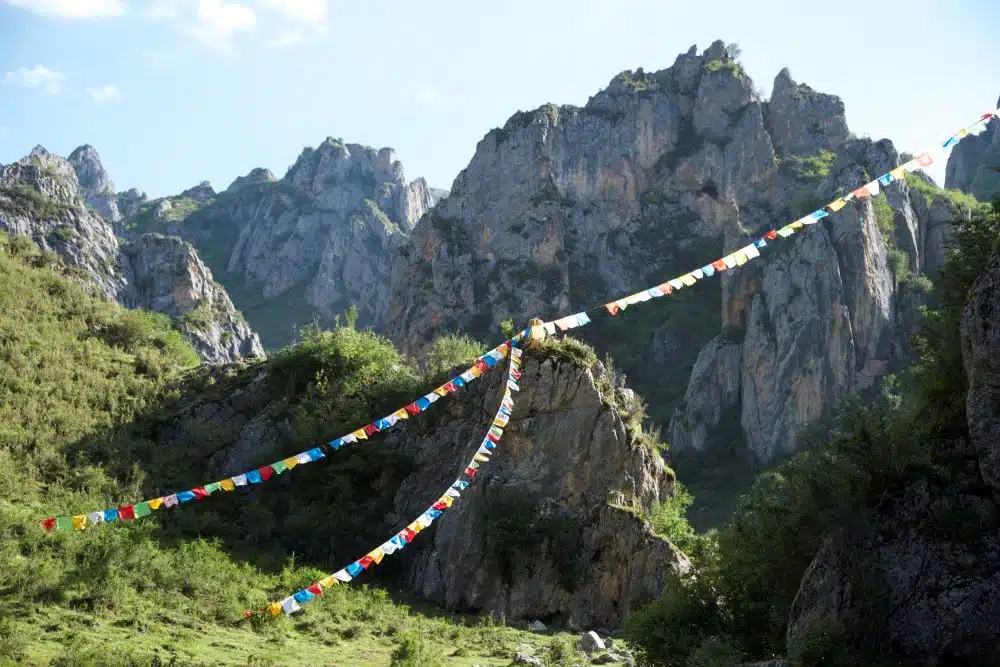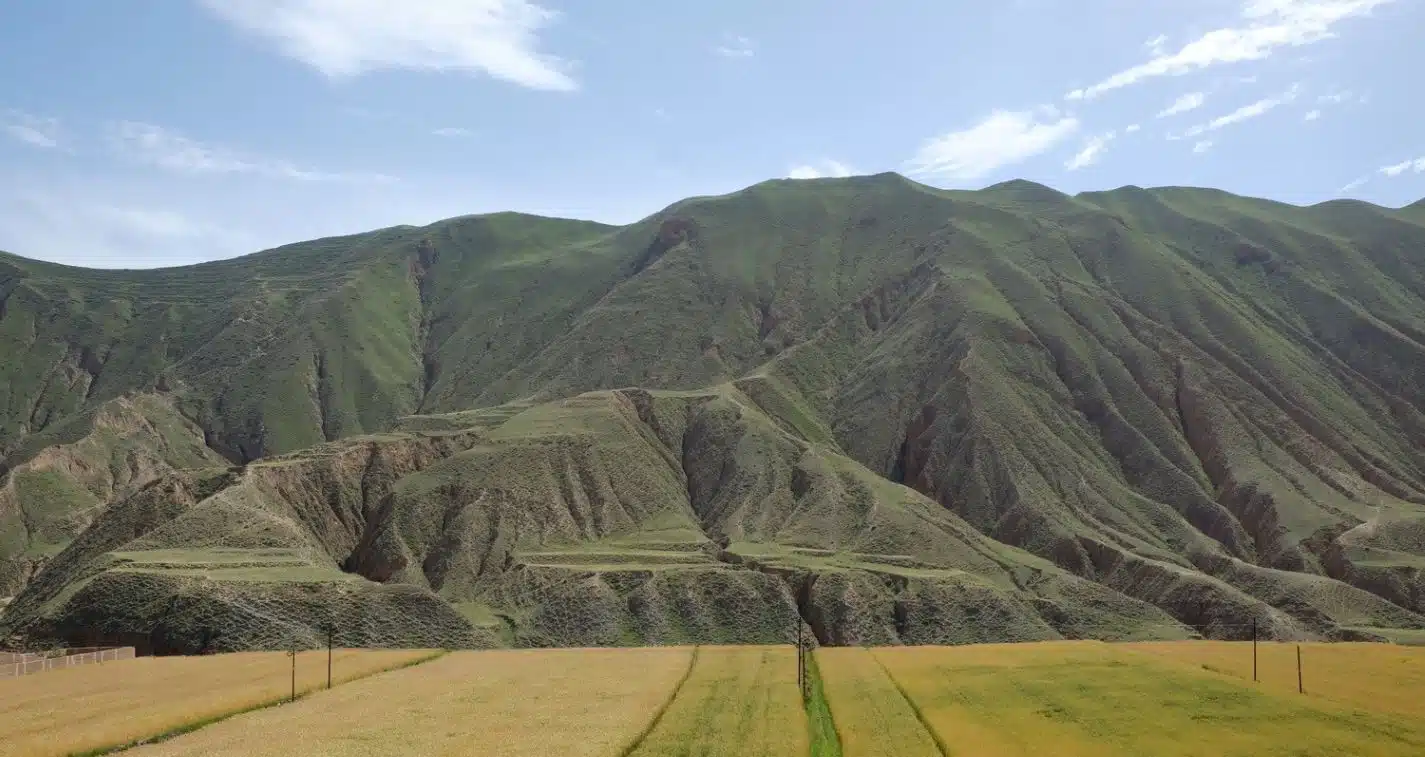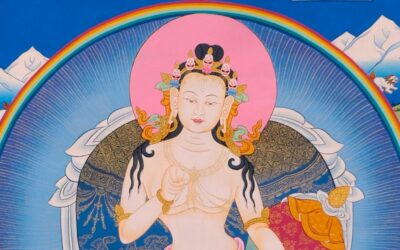The mountain is alive! 3

Written By Paul Baffier
Blog | Culture and tradition
In “The mountain is alive ! 3” Paul speaks of the mountain’s definite impact on human life, and redefines its place among other forms of being.
The mountain is alive! 3
The strength of beings and the breath of place
The Five Tseringmas, the Twelve Tenmas, Machen Pomra, Nangchen Thanglha… the Himalayan chtonian pantheon abounds with territorial deities whose names and prayers are known and invoked: each with its own text, liturgy and field of activity.
From the perspective that the landscape is alive and charged with instructions that recall the fundamental experience of the nature of spirit, chtonian knowledge, born of direct perception and a full relationship with the forces of the living, has been integrated into the principles of practice of the Great Perfection: how could it be otherwise, since the experience of the nature of spirit is closely linked to the subtle perception of the vital energy that permeates the bodies of beings?
As all beings have a vital breath (srog, pronounced sok), mountains have a life principle corresponding to their physical extent: they are less individuals than countries, less people than host lands. “Pillar of heaven”, “navel of the earth”: the great Tibetologist Stein tells us that the epithets attributed to the mythical hero Gesar of Ling are also given to the deity-regions. Traditions thus place them at the confluence of the subterranean and celestial worlds, in a function of axis mundi (axial center of the world) **or omphalos (beginning of the world, navel of the earth).
Nomadic oral culture relates that the vertical axis (srog shing, pronounced sogshing) of the mountain, located at its heart, corresponds to the subtle central channel (dbu ma, pronounced ouma) of human vital energy. Mila Khyentse explains that we use the term srog rtsa (pronounced sogtsa) for mundane places, and that dbu ma is used to refer to stupas. Sacred geography and spiritual physiology come together in a bioenergetic understanding: beings living in the vicinity of the mountain’s powerful vital breath (srog) see their lifespan extended and their health improved by its protective force radiance (rlung rta, pronounced loungta).
« The living mountain is so sharing that all beings on its soil share a little of its breath. It is a nurturing world-being, imparting beneficial energy to all living things on its flanks. »
This form of benevolence accompanies all beings present on the land, especially the herds, the foundation of the nomadic society’s livelihood. Bellezza writes in his masterwork, Divine Dyads, Ancient Civilization in Tibet, that “the health, fertility and viability of the ‘brog pa’s [pronounced drokpa, nomads] sheep, goats, yaks and horses hinges on the srog and is believed to be directly related to the custodial power of gNyan chen thang lha.”[1]
The living mountain is so sharing that all beings on its soil share a little of its breath. It is a nurturing world-being, imparting beneficial energy to all living things on its flanks. But this process can also be reversed if a being’s behavior is perceived negatively by the mountain, which then has the power to damage the offender’s vital breath.
John Vincent Bellezza reports in his book that “there has been a growing fear in the region recently that gNyan chen thang lha has been angered by economic liberalization and attendant ecological problems. Mining operations, the commercial exploitation of plants and the development of modem settlements are said to be of grave concern to the mountain. As king of the land and its natural resources, gNyan chen thang lha is thought to see such activities as an affront to his well-being and dignity. Some brog pa claim that, as a result, gNyan chen thang lha is threatening to bring catastrophe to the country. There is a common fear that, as environmental degradation increases, the risk of disaster also grows.”[2]
In this context, where ecological concern is based on the perception of the vital breath of the living, the “la” (tib.: bla) is even more essential. The “la” is difficult to define: it is distinct from the vital breath (srog) because it is less the changing dynamic of the stream of consciousness than its psycho-energetic persistence, its essential force.
Bellezza writes: “Not only do flesh and blood beings and spirits act as a support or vessel for the bla, but so do trees, rocks, mountains, lakes, precious stones and other objects which are called bla gnas [pronounced “lané”, residence of the bla]. […] People and deities often have soul force animals (bla gnas kyi sems can}, which serve as protectors and receptacles of their soul force. bLa animals include tigers, lions, birds, bears,· yaks, wolves, deer and perhaps dragons. The belief in the bla is an extremely old one, and which may be related to archaic totemic beliefs.”[3]
In this way, beings can become the guarantors of their own survival, in a psycho-energetic interpenetration far stronger than the material separation of distinct, individualized bodies would suggest.
More specifically, certain places are considered to be the receptacles of an entire population living in symbiosis with a given territory. A culture, then, is no longer just a set of ideas manifested in customs and life skills; it’s a territorial bio-rhythm, a single heartbeat. Lake Yamdok (yar ‘brok), for example, is said to house the life force of the entire Tibetan people; if it were to dry up, it is said that the entire population of the Land of Snow would die.
This is a cause for concern for us Westerners, whose lakes and rivers are a diminishing life force in these times of intense global drought. At a time when huge fires are wiping out entire forests, will we also disappear? Or worse… turn into a zombie humanity, deprived of life force?
So we need to rethink and re-interrogate terms like “animism”, “local deity”, “propitiation of the spirits of the place”… Behind these deceptively complex or archaizing terms lies a spiritual knowledge of living together that reveals a very concrete understanding of the place of human beings in their natural environment: “small, but not insignificant”.
Small, but not insignificant, because anyone who has ever stood alone against a bear or a wolf knows that they are no match for the brute, sovereign force of an animal. It’s the kind of experience that puts you back in your place among the other beings that make up the living world: not superior, just one of them.
Not insignificant, because through his profound knowledge of how the immanent and the transcendent open up to the living, the human being can have a decisive influence on this universe of multiple layers, visible and invisible.
[1] John Vincent Bellezza, Divine Dyads, Ancient Civilization in Tibet, p.31
[2] John Vincent Bellezza, Divine Dyads, Ancient Civilization in Tibet, p.32 BACK
[3] John Vincent Bellezza, Divine Dyads, Ancient Civilization in Tibet, p.33
This series of articles is based on some essential reading:
The Cult of Pure Crystal Mountain: Popular Pilgrimage and Visionary Landscape in Southeast Tibet, Tony Huber
Divine Dyads, Ancient Civilization in Tibet, John Vincent Bellezza
Oracles and Demons of Tibet: The Cult and Iconography of the Tibetan Protective Deities, René Nebesky-Wojkowitz
Read the other articles of the series : The mountain is alive ! 2 – The Mountain is alive ! 1
More Posts
The ground of all Künshi
This article “The ground of all, Künshi” provide a better understanding of the essential words and concepts of Dzogchen.
The Four Testaments of the Vidyādharas
This article from Grégoire presents the" Four Testaments of the Vidyādharas", essential teachings from the early masters of Dzogchen.
The Story of the First Masters: Garab Dorje
“The Story of the First Masters: Garab Dorje” is the first article in a new category about the masters of the Dzogchen lineage.





